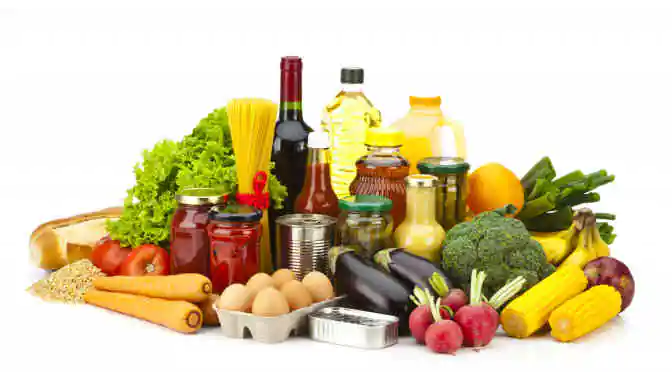Very few industries have a such direct, personal connection with their consumers as the food and beverages (F&B) industry. 2018 has witnessed immense growth and complex patterns in the global F&B industry. Here are the top 10 food and beverage industry trends that, according to our expert analysts, were prominent in 2018 and will continue into 2019.
Top 10 Food and Beverage Industry Trends in 2018
1. Sustainable and local food choices
Gone are the days when exotic food shipped from another part of the world was the most sought-after. As one of the top food and beverage industry trends, healthy dining is built on the premise that eating local and sustainable produce is the best choice for the body and the environment. This trend has given new opportunity to local farmers, increased their bargaining power, introduced food items that have minimal chemicals and hormones, and reduced the overall transportation charges.
2. Healthy snack items
Snacking has become a vital part of everyone’s diet one of the major food and beverage industry trends around the world. While consumers become more health-conscious, brands like PepsiCo are working to offer healthy snack options. Apart from energy-boosting snacks like nuts, fruits, and yogurt, plant-based snacks and nut-based juice and smoothies have emerged. Dairy alternatives have witnessed major sales, with vendors like Blue Diamond Growers and Danone creating innovative, healthy snack options.
3. Plant-based protein rules
The desire for plant-based proteins has forced vendors to change their business strategy. 2017 witnessed a huge decline in the demand for traditional animal-based protein items. Apart from vegetables, seeds, and legumes, fish species like skipjack, mackerel, and rock fish have seen huge demand from consumers. Whey protein has also become increasingly popular among millennials, forcing vendors to establish competitive pricing and marketing strategies.
4. Say yes to minimally processed foods
In a world where obesity and cardiovascular diseases have become top health concerns, the dangers of sugar, sodium, and saturated fats have forced stakeholders in industry to offer healthier substitutes. With customer preference for foods that are as close to their natural state as possible, minimally processed foods are now no longer a fad, but a reality that manufacturers must accept.
5. Food has also gone mobile
The tech-savvy world prefers everything on the go, and food is no exception. Ordering food through mobile apps that provide interactive menus and fresh food has become an integral part of modern urban life. Keeping this trend in mind, many restaurants have created customized apps of their own, wherein apart from food delivery, they also provide loyalty points to their customers. A number of high-end hotels have created apps that allow customers to easily access their menus whenever and wherever they need.
6. Hybrid cuisine
An extension of fusion food, 2017 saw the food and beverages industry experimenting with hybrid cuisine. Creating a well-balanced dish that infuses the traditional techniques of two culinary worlds has won the taste buds of the masses. According to our industry experts, this is a trend that will have major spillover into 2018.
7. Breakfast: no longer an overlooked meal
Rather than choosing the standard breakfast, 2017 saw an increasing preference for ethnic-inspired breakfasts. This has led to a growing demand for a variety of breads, spreads, and salads. Hot and flavorful cereals have replaced bland oatmeal. Similarly, regional fruits like red bananas, pomegranates, and Asian peers have entered the food market, replacing exotic fruit produces.
8. Cocktails and mocktails
In 2018, the beverages industry saw a major spike in the demand for mocktails and cocktails. One major reason behind this development is increased purchasing power, and the emergence of millennials as the major consumer base. Big names in the alcoholic drinks industry like Bourbon have created a variety of tonics and gins.
Another trend that has changed the beverages industry is the high preference for local wines and locally brewed craft beers. For non-drinkers, vendors of non-alcoholic beverages have created alcohol-free cocktails and mixed drinks with infusions of fresh fruits.
9. Homemade food is an industry now
For a generation that is always ‘on the move’, homemade food has become a luxury. This explains why most stakeholders prefer investing in small companies that make homemade food available to the customers. Whether it is authentic pickle, spreads, cakes, or Christmas eve dinner, customers now prefer highly personalized food items that match their tastes and leaves a great impression among their guests. Homemade has changed the way the food and beverages industry functions. In this case, the competition is more at a local level, and the customer behavior can be studied in a more direct manner.
10. Bolder flavors are here to stay
Customers have become increasingly receptive to different cuisines and tastes. This has given vendors from the APAC region a chance to extend their market and reach out to new consumers. The popularity of Thai and Indian food and drinks has opened the doors for stakeholders to invest in the American and European markets as well.
Overall, 2018 has brought immense opportunities for stakeholders in the F&B industry. It has also made clear that our food choices define the future, thus the growing preference for sustainable farming, local produce, and preference for fresh, non-processed food and beverages. These food and beverage industry trends have set the tone for how the industry will fare in 2018, and are sure to influence the marketing strategy for major names in the global food and beverages industry.
Check out our top-selling reports on the food and beverages industry trends here.



